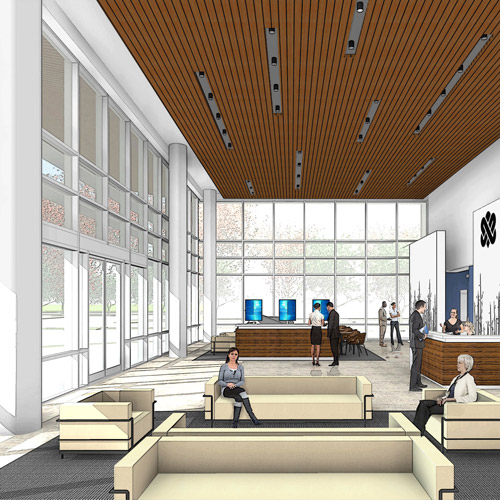According to Alan Shaw, successful retail creates a unique energy. He should know. As vice president of real estate for Sears Holdings Corporation, Shaw sees that energy up close.
“There’s an infectious excitement generated when you see a lot of people going in and out of a store,” he says.
Yet his experience isn’t limited to just Sears Holdings, the retailer focused on seamlessly integrating the digital and physical shopping experience for customers. Prior to joining Sears in 2009, Shaw was an entrepreneur who built and sold three real estate companies, including retail, industrial, and development practices. He says his passion was building companies, leveraging real estate with an eye toward maximizing value, streamlining processes, and reinforcing sound strategy.
With these passions in mind, Shaw admits he was skeptical of working for the corporate giant.
“I was very honest in my interview about being an entrepreneur, not a corporate real estate guy,” he explains. As it turned out, he was the type of guy leadership was looking for anyway. In the early phases of an unprecedented transformation of Sears Holdings, the company welcomed such entrepreneurial minds.
At that point, it had been about four years since the Sears/Kmart merger, and about four decades since the increasingly ubiquitous shopping malls had to have Sears, the world’s largest retailer, as an anchor to secure financing, Shaw says.
Changing times and changing shopping habits—along with the tremendous success of key retailers such as Walmart, Home Depot, and Marshalls—took their toll on the venerable Sears (founded 1886 as Sears, Roebuck & Co.) and Kmart (founded 1899 as SS Kresge Corporation).
Compounding those challenges were 1,300 Kmart locations averaging 100,000 square feet apiece—to say nothing of the 300,000–400,000-square-foot spaces in more than 900 Sears locations. Shaw credits Eddie Lampert, current chairman and CEO of Sears Holdings, with understanding that such massive real estate could build the company back up again rather than drag it down further.
Lampert’s idea was to lease space in Sears and Kmart stores to quality tenants, enabling the stores to downsize and reduce inventory as well as costs—but also create a significant upside for the company.
“Now, as a landlord and a retailer, we generate an income stream of rent—plus benefits from increased foot traffic from the other retailers,” Shaw says. “Three legs of the stool.”
Sears Holdings had been active in buying and selling real estate since the merger, but didn’t have any development experience, which created the perfect opportunity for Shaw, who brought that to the company.
Jeff Stollenwerck, president of real estate at Sears Holdings, put Shaw in charge of developing a strategy, which allowed Shaw to utilize his entrepreneurial hat. With the two portfolios amounting to 240 million square feet of retail and 90 million square feet of warehouse space—none of which Sears Holdings was interested in selling—Shaw had his work cut out for him.
Still, there was one more statistic he couldn’t forget—between the two store portfolios, their real estate is within a 30-minute drive of 90 percent of the US population. Everything seemed well-positioned to flourish again, but only if the company could put a plan in place to make it happen.
Rather than going for the obvious (focusing on leasing space in the lower-performing stores in C- and D-grade malls) Shaw instead targeted the real estate in some of Sears’ best-performing stores—those which were in highly sought after malls and stores that still had excess square footage.

“I considered our space in terms of market demand,” he says. “Where was real estate highly valued by prospective tenants? There remained opportunity for us to consolidate our retail footprint, supply high demand space to a tenant retailer, and benefit from new traffic that the new retailer would halo off to us. . . . There were retailers who wanted to penetrate into the malls where we had stores, yet they were unable to get space. So we became this really interesting opportunity for people to lease space.”
Beyond the initial issue of simply being taken seriously (“People first saw us as a retailer dabbling in real estate rather than a world-class real estate organization,” Shaw says), there were complex logistical matters, such as dividing stores in a way that gave tenants equitable, accessible space.
“Most tenants in malls want to be accessible from the inside, which for us is not always so easy,” Shaw says. “There were literally hundreds of nuances that we started uncovering.”
Moreover, mall owners initially feared that Sears would either undercut their leasing rates or lease to tenants the malls considered undesirable. Costa Mesa’s South Coast Plaza—the largest mall on the West Coast—shared these sentiments when Shaw proposed leasing some of the more than 300,000 square feet of space in its store and consolidating it to 250,000 square feet, thus focusing on Sears’ most profitable product mix.
“I developed a new store layout for Sears and started working with retailers such as Forever 21,” Shaw says. “But the mall owner needed to consent to the (new) exterior façade. Initially, they really didn’t want us to lease space. Our strategy was unusual, and they were uncertain how it would impact them. It knocked me back a little bit, but I started looking at things from their perspective and working through the issues they had, which—understandably—were all about protecting their asset. And it is quite an asset.”
Eventually a deal was struck, and Sears leased to Forever 21 as planned. Today, both locations are enjoying great success on a dollars-to-square-foot basis, with Sears’ jumping double digits within two months of Forever 21’s opening in June 2011.
“The mall benefited, we benefited, Forever 21 benefited, and in the end, the customers benefited,” Shaw says. “A win-win-win-win situation. And that set the stage for our having the conversation with other mall owners around the country.”
Six years later, Sears the department store and Sears the leasing agent continue to benefit Sears Holdings as a whole, with more than 100 leasing transactions thus far.
“We are in a position where we don’t have to take every deal,” Shaw says. “We’re being progressive and proactive, but smart and prudent. We are building a world-class real estate organization with symbiotic benefits to the retail side of our business.”



